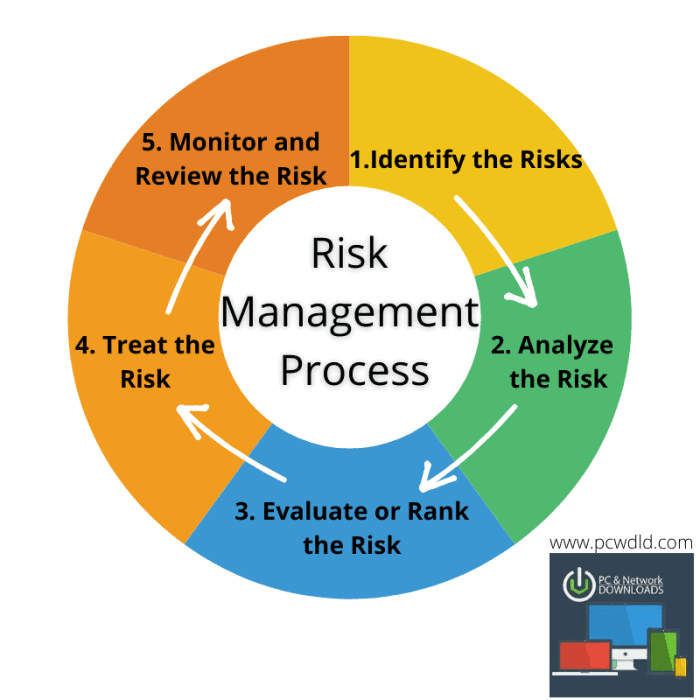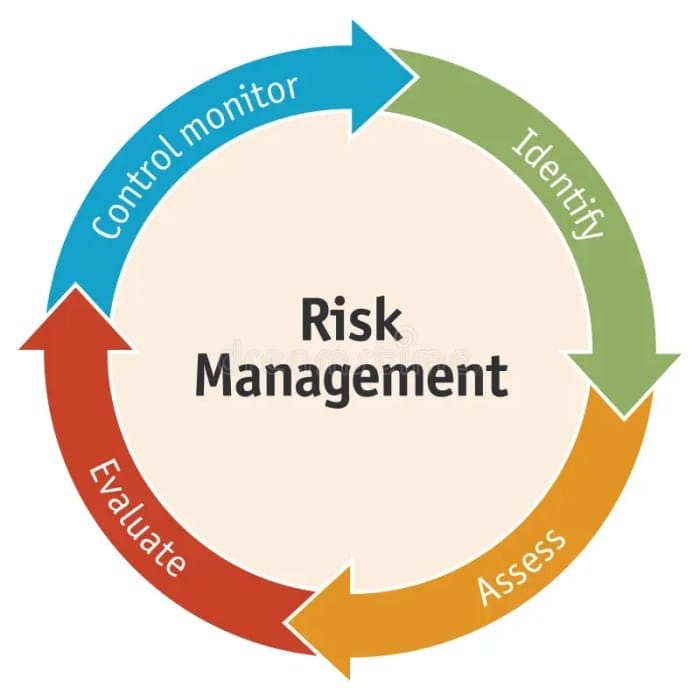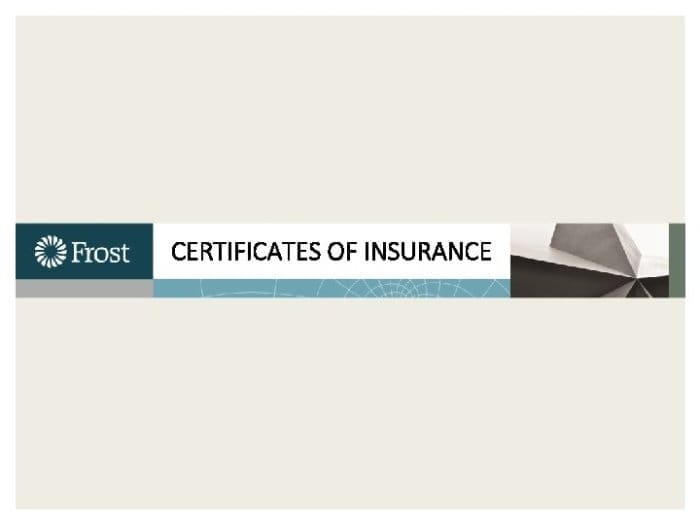In the intricate world of business transactions, contracts and certificates of insurance play a crucial role in managing and mitigating risks. This article delves into essential risk management tips for these documents, providing valuable insights to safeguard your organization’s interests and ensure compliance.
From identifying potential risks and understanding contractual obligations to effectively utilizing insurance certificates and implementing risk mitigation strategies, we’ll explore the nuances of risk management in contracts and certificates of insurance. By adopting these tips, you’ll gain a competitive edge in navigating complex agreements and minimizing liabilities.
Risk Identification
Contracts and certificates of insurance play a pivotal role in risk management. Identifying risks associated with these documents is crucial to ensure the efficacy of risk management strategies.
Potential risks may arise from various aspects, including:
Ambiguity and Incompleteness
Unclear or incomplete provisions in contracts or certificates of insurance can lead to disputes and misinterpretations, potentially resulting in financial losses or legal complications.
Omissions and Errors
Inadvertent omissions or errors in these documents may leave certain risks uncovered, exposing parties to unforeseen liabilities.
Misrepresentation or Fraud
Misrepresentation or fraudulent activities can undermine the validity of contracts or certificates of insurance, potentially leading to denied claims or legal consequences.
Non-Compliance
Failure to comply with legal or regulatory requirements in drafting contracts or certificates of insurance may result in penalties, reputational damage, or invalidity of the documents.
Methods for Effective Risk Identification
Effective risk identification involves a systematic approach:
- Thorough Review: Conduct a meticulous review of contracts and certificates of insurance, scrutinizing each provision and term.
- Legal and Expert Advice: Consult legal professionals and insurance experts to obtain specialized insights and guidance.
- Stakeholder Involvement: Engage all relevant stakeholders, including legal counsel, risk managers, and insurance brokers, to gain diverse perspectives.
- Risk Assessment Tools: Utilize risk assessment tools and techniques to systematically evaluate and prioritize risks.
Contractual Obligations

In the realm of risk management, contractual obligations hold immense significance. Contracts serve as legal frameworks that Artikel the responsibilities, rights, and obligations of parties involved in an agreement. Understanding and addressing contractual obligations is crucial for effective risk management, ensuring clarity, accountability, and mitigation of potential risks.
Key Clauses and Provisions
Contracts typically include key clauses and provisions that specifically address risk allocation and mitigation. These clauses define the roles, liabilities, and expectations of each party, establishing a framework for managing and sharing risks.
- Limitation of Liability: These clauses limit the extent of liability that one party can incur towards the other in case of a breach of contract or negligence. They help manage financial risks and protect parties from excessive liability.
- Indemnification Clauses: Indemnification clauses require one party to compensate the other for any losses, damages, or expenses incurred due to the actions or negligence of the indemnifying party. They provide financial protection and allocate risk appropriately.
- Force Majeure Clauses: Force majeure clauses excuse parties from performing their contractual obligations in the event of unforeseen circumstances beyond their control, such as natural disasters, strikes, or pandemics. They help mitigate risks associated with disruptions and unforeseen events.
Examples of Effective Clauses
Well-drafted contractual clauses can effectively manage risks and protect the interests of all parties involved. Here are some examples:
- Clear Definition of Roles and Responsibilities: Clearly outlining the roles and responsibilities of each party helps prevent disputes and confusion. This includes defining the scope of work, deliverables, timelines, and payment terms.
- Warranties and Representations: Warranties and representations provide assurances from one party to another regarding the accuracy and completeness of information provided. They help mitigate risks associated with false or misleading information.
- Dispute Resolution Mechanisms: Including dispute resolution mechanisms, such as arbitration or mediation, can help resolve disputes efficiently and amicably, minimizing the risk of costly and protracted litigation.
Insurance Certificates

In risk management, insurance certificates serve as crucial instruments for verifying that parties involved in a contract possess adequate insurance coverage to protect against potential liabilities and financial losses. These certificates offer a formal confirmation of the existence and status of an insurance policy, ensuring compliance with contractual obligations and safeguarding the interests of all parties involved.
Types of Insurance Certificates
Insurance certificates come in various forms, each tailored to specific types of coverage. Common examples include:
- Commercial General Liability (CGL) Certificate: Provides evidence of coverage for common liabilities faced by businesses, such as bodily injury, property damage, and advertising injury.
- Workers’ Compensation Certificate: Confirms that an employer has obtained workers’ compensation insurance to protect employees in case of work-related injuries or illnesses.
- Professional Liability Certificate: Offers coverage for professionals against claims of negligence or errors and omissions in their services.
- Automobile Liability Certificate: Verifies that a vehicle owner has liability insurance to cover damages or injuries caused by their vehicle.
- Builder’s Risk Certificate: Provides coverage for property under construction or renovation against risks such as fire, theft, and vandalism.
Key Elements to Review
When evaluating insurance certificates, it is essential to scrutinize specific elements to ensure their validity and adequacy:
- Certificate Holder: Verify that the certificate holder’s name matches the entity or individual requiring insurance coverage.
- Policy Number and Effective Dates: Confirm that the policy number and effective dates are accurate and align with the contractual requirements.
- Limits of Liability: Review the policy limits to ensure they meet or exceed the minimum coverage amounts specified in the contract.
- Coverage Details: Carefully examine the types of coverage provided by the policy to ensure they align with the specific risks and liabilities Artikeld in the contract.
- Endorsements and Exclusions: Be mindful of any endorsements or exclusions that may alter the coverage provided by the policy.
- Certificate Issuance Date: Verify that the certificate issuance date is recent, as older certificates may not reflect current policy status.
Risk Mitigation Strategies

Risk mitigation strategies are employed in contracts and certificates of insurance to minimize the impact of potential risks and protect the interests of all parties involved. These strategies aim to identify, assess, and manage risks effectively, thereby reducing the likelihood and severity of their occurrence.
Common Risk Mitigation Strategies
Common risk mitigation strategies employed in contracts and certificates of insurance include:
- Warranties: Warranties are contractual promises made by one party to another, ensuring the truthfulness or existence of a certain fact or condition. They provide a level of assurance and protection to the receiving party, as any breach of warranty can result in legal consequences.
- Indemnities: Indemnities are contractual agreements whereby one party (the indemnifying party) agrees to compensate or reimburse another party (the indemnified party) for any losses, damages, or liabilities incurred as a result of a specific event or action. Indemnities offer financial protection and peace of mind to the indemnified party.
- Limitations of Liability: Limitations of liability clauses aim to limit the extent of a party’s financial responsibility in the event of a breach of contract or other legal obligation. These clauses define the maximum amount that a party can be held liable for, providing a degree of predictability and protection against excessive or unforeseen liability.
Effectiveness of Risk Mitigation Strategies
The effectiveness of risk mitigation strategies depends on various factors, including the specific context, the nature of the risks involved, and the clarity and enforceability of the contractual provisions. In general, however, these strategies can be effective in reducing the likelihood and severity of risks, as well as providing legal recourse and financial protection to the parties involved.
For instance, warranties can help ensure the accuracy of information provided by one party to another, thereby reducing the risk of disputes and misunderstandings. Indemnities can provide financial relief to the indemnified party in the event of losses or damages, mitigating the impact of unexpected events.
Limitations of liability can help manage financial exposure and prevent excessive liability claims.
It is important to note that the effectiveness of risk mitigation strategies can also be influenced by factors such as the bargaining power of the parties involved, the clarity and enforceability of the contractual provisions, and the overall legal and regulatory framework governing the contract or insurance agreement.
Legal and Regulatory Considerations

The legal and regulatory framework surrounding risk management in contracts and certificates of insurance plays a crucial role in ensuring compliance and mitigating potential liabilities. These legal and regulatory requirements establish guidelines for the parties involved and provide a mechanism for enforcing obligations and resolving disputes.
Failure to comply with these requirements can result in severe consequences, including legal penalties, financial losses, and reputational damage.
Relevant Laws and Regulations
Numerous laws and regulations govern the legal and regulatory aspects of risk management in contracts and certificates of insurance. Some notable examples include:
- Contract Law: Contract law governs the formation, interpretation, and enforcement of contracts. It establishes the rights and obligations of the parties involved and provides remedies for breach of contract.
- Insurance Law: Insurance law regulates the insurance industry, including the issuance and enforcement of insurance policies. It defines the rights and responsibilities of insurers and policyholders and establishes guidelines for claims handling and dispute resolution.
- Tort Law: Tort law deals with civil wrongs and liabilities arising from negligence or intentional acts that cause harm or injury to others. It provides a framework for seeking compensation for damages suffered.
- Regulatory Compliance: Various regulatory agencies, such as the Securities and Exchange Commission (SEC) and the Financial Industry Regulatory Authority (FINRA), have specific regulations governing risk management practices in the financial industry. These regulations aim to protect investors and ensure the stability of the financial system.
Implications of Non-Compliance
Non-compliance with legal and regulatory requirements can lead to a range of negative consequences, including:
- Legal Penalties: Failure to comply with laws and regulations can result in legal penalties, such as fines, sanctions, or even criminal charges. These penalties can be substantial and can severely impact a company’s operations and reputation.
- Financial Losses: Non-compliance can also lead to financial losses, such as claims, lawsuits, or regulatory fines. These losses can be significant and can have a detrimental impact on a company’s financial stability.
- Reputational Damage: Non-compliance can also damage a company’s reputation. Negative publicity and media attention can erode trust among customers, partners, and investors, leading to lost business and decreased profitability.
Documentation and Record Keeping

Proper documentation and record keeping are crucial in risk management, providing a solid foundation for effective risk identification, assessment, and mitigation. These records serve as valuable evidence for compliance, audits, and potential legal disputes.
Essential documents and records related to contracts and certificates of insurance include:
- Contracts: These legally binding agreements Artikel the rights and obligations of parties involved in a transaction, including risk allocation and insurance requirements.
- Certificates of Insurance: These documents provide proof of insurance coverage, confirming the policyholder, coverage limits, and policy period.
- Risk Assessments: These evaluations identify potential risks and vulnerabilities, along with strategies to minimize their impact.
- Incident Reports: These records document accidents, injuries, or property damage, providing valuable insights for future risk mitigation.
- Correspondence: Emails, letters, and other forms of communication related to risk management activities should be retained for reference.
Maintaining accurate and organized records is essential for effective risk management. Best practices include:
- Centralized System: Establish a centralized system for storing and organizing all risk-related documents and records.
- Regular Updates: Regularly update records to ensure they reflect the latest information and changes in risk management strategies.
- Access Control: Implement access controls to restrict access to sensitive information to authorized personnel only.
- Backups: Regularly back up records to protect against data loss due to hardware failure or cyberattacks.
- Retention Policies: Develop and enforce retention policies that determine how long records should be kept before they can be destroyed.
Communication and Collaboration

Effective communication and collaboration among stakeholders are paramount in risk management. Clear and timely communication ensures that risks are identified, assessed, and mitigated promptly. Collaborative efforts foster a shared understanding of risks and responsibilities, enabling proactive and coordinated responses.
Importance of Effective Communication
- Ensures timely identification and assessment of risks
- Facilitates the development of comprehensive risk mitigation strategies
- Promotes transparency and accountability among stakeholders
- Enhances decision-making by providing accurate and relevant information
Strategies for Effective Communication
- Establish clear communication channels and protocols
- Conduct regular risk management meetings to discuss and review risks
- Use visual aids, such as risk matrices and charts, to communicate risks effectively
- Provide training and support to stakeholders to enhance their communication skills
Benefits of Collaboration
- Encourages the sharing of knowledge, expertise, and resources
- Promotes a holistic approach to risk management
- Improves the efficiency and effectiveness of risk management processes
- Fosters a culture of risk awareness and responsibility
Collaboration Between Legal, Risk Management, and Insurance Professionals
- Legal professionals provide guidance on legal and regulatory requirements
- Risk management professionals assess risks and develop mitigation strategies
- Insurance professionals provide expertise in insurance coverage and risk transfer
- Collaborative efforts ensure a comprehensive and effective approach to risk management
Continuous Monitoring and Review
Effective risk management requires ongoing monitoring and review of contracts and certificates of insurance to ensure compliance, identify potential risks, and make necessary adjustments.
Regular reviews help identify changes in the business environment, regulatory requirements, or contractual obligations that may impact risk exposure. It allows organizations to proactively address emerging risks, mitigate potential liabilities, and maintain compliance.
Key Indicators to Monitor
- Contractual Compliance: Review contracts to ensure compliance with terms, conditions, and obligations. Monitor for any deviations or breaches that may lead to legal or financial consequences.
- Changes in Regulations: Stay updated on changes in relevant laws, regulations, and industry standards that may impact contractual obligations or insurance coverage.
- Risk Assessments: Conduct periodic risk assessments to identify new or evolving risks that may require additional mitigation strategies or adjustments to insurance coverage.
- Claims History: Analyze claims history to identify trends, patterns, or areas of high risk. This information can help organizations target risk mitigation efforts and negotiate better insurance terms.
- Insurance Coverage Adequacy: Review insurance policies to ensure they provide adequate coverage for identified risks. Monitor policy limits, deductibles, and exclusions to ensure they align with changing needs.
Importance of Regular Reviews
Regular reviews of contracts and certificates of insurance are crucial for several reasons:
- Compliance: Ongoing reviews help organizations maintain compliance with contractual obligations, legal requirements, and regulatory standards.
- Risk Mitigation: Identifying and addressing potential risks early on can help organizations minimize their impact and protect their assets.
- Cost Optimization: Regular reviews can help identify areas where insurance coverage may be redundant or unnecessary, leading to cost savings.
- Improved Decision-Making: Up-to-date information on contracts and insurance coverage enables organizations to make informed decisions regarding risk management strategies.
Training and Education

Personnel involved in risk management must receive proper training and education to ensure they possess the knowledge and skills necessary to effectively identify, assess, and mitigate risks. This section explores the significance of training and education in risk management, provides examples of available training programs and resources, and highlights the benefits of ongoing learning in this field.
Importance of Training and Education
Training and education are crucial for risk management professionals as they enable them to:
- Develop a comprehensive understanding of risk management principles, methodologies, and best practices.
- Stay updated with the latest developments and trends in risk management.
- Enhance their ability to identify, assess, and prioritize risks.
- Develop effective risk mitigation strategies.
- Communicate risk-related information effectively to stakeholders.
Training Programs and Resources
Numerous training programs and resources are available for risk management professionals, including:
- Professional certifications: Certifications such as the Certified Risk Management (CRM) and the Associate in Risk Management (ARM) provide formal recognition of an individual’s knowledge and skills in risk management.
- Online courses: Various online platforms offer courses on risk management, allowing professionals to learn at their own pace and convenience.
- Seminars and workshops: Industry associations and professional organizations frequently conduct seminars and workshops on risk management, providing opportunities for professionals to network and learn from experts.
- Books and publications: Numerous books, journals, and articles on risk management are available, enabling professionals to stay informed about the latest developments in the field.
Benefits of Training and Education
Investing in training and education for risk management professionals offers several benefits, including:
- Improved risk management practices: Training and education help professionals develop and implement more effective risk management practices, leading to better risk identification, assessment, and mitigation.
- Enhanced decision-making: Training and education equip professionals with the knowledge and skills necessary to make informed decisions regarding risk management strategies.
- Increased organizational resilience: Organizations with well-trained risk management professionals are better equipped to withstand and recover from unexpected events.
- Improved regulatory compliance: Training and education help professionals stay updated with regulatory requirements related to risk management, ensuring compliance and avoiding legal liabilities.
Industry Best Practices

In the realm of risk management, adhering to industry best practices is paramount for organizations seeking effective mitigation of contractual and insurance-related risks. These best practices encompass a comprehensive approach that addresses risk identification, assessment, mitigation, and monitoring. By adopting these standards, organizations can enhance their risk management strategies, minimize potential losses, and foster a culture of proactive risk management.
Identifying and Implementing Best Practices
Industry best practices for risk management in contracts and certificates of insurance are dynamic and evolve with changing market conditions and regulatory landscapes. However, certain fundamental principles remain consistent. These include:
- Risk Assessment: Conducting thorough risk assessments to identify potential hazards and vulnerabilities in contracts and insurance policies.
- Contractual Obligations: Clearly defining and documenting contractual obligations, including risk allocation, insurance requirements, and liability provisions.
- Insurance Coverage: Ensuring adequate insurance coverage to mitigate potential financial losses and protect against liabilities.
- Risk Mitigation Strategies: Implementing proactive risk mitigation strategies to minimize the likelihood and impact of potential risks.
- Legal and Regulatory Compliance: Complying with relevant laws, regulations, and industry standards pertaining to risk management.
- Documentation and Record Keeping: Maintaining accurate and organized documentation of risk assessments, contracts, insurance policies, and other relevant documents.
- Communication and Collaboration: Fostering effective communication and collaboration among stakeholders, including legal, risk management, and insurance professionals.
- Continuous Monitoring and Review: Regularly monitoring and reviewing risk management practices to ensure their effectiveness and alignment with changing circumstances.
- Training and Education: Providing comprehensive training and education to employees and stakeholders on risk management best practices.
Benefits of Adopting Best Practices
Organizations that embrace industry best practices for risk management in contracts and certificates of insurance reap numerous benefits, including:
- Reduced Financial Losses: By proactively identifying and mitigating risks, organizations can minimize the likelihood and impact of financial losses.
- Enhanced Compliance: Adherence to best practices ensures compliance with legal and regulatory requirements, reducing the risk of penalties and reputational damage.
- Improved Risk Management Culture: A strong commitment to best practices fosters a culture of risk awareness and proactive risk management throughout the organization.
- Increased Stakeholder Confidence: Adherence to best practices instills confidence among stakeholders, including clients, investors, and regulators.
- Competitive Advantage: Organizations that effectively manage risks gain a competitive advantage by demonstrating their commitment to safety, compliance, and responsible business practices.
Examples of Successful Implementations
Numerous organizations have successfully implemented industry best practices for risk management in contracts and certificates of insurance. These organizations have experienced significant improvements in their risk management processes, resulting in reduced financial losses, enhanced compliance, and improved stakeholder confidence.
One notable example is the multinational corporation, XYZ Industries. Through a comprehensive risk management program that aligns with industry best practices, XYZ Industries has significantly reduced its exposure to contractual and insurance-related risks. The company’s risk management team conducts thorough risk assessments, negotiates favorable contractual terms, and maintains robust insurance coverage.
This proactive approach has resulted in substantial cost savings and a strong reputation for risk management excellence.
Final Thoughts
In conclusion, effective risk management in contracts and certificates of insurance is paramount for organizations seeking to protect their assets, reputation, and legal standing. By adhering to the strategies Artikeld in this article, you can proactively address potential risks, ensure compliance with legal and regulatory requirements, and foster a culture of risk awareness within your organization.
Remember, risk management is an ongoing process, and continuous monitoring, review, and education are essential to maintain a robust and resilient risk management framework.
FAQ
Q: Why is identifying risks associated with contracts and certificates of insurance important?
A: Identifying risks helps organizations understand potential vulnerabilities and liabilities, enabling them to take proactive measures to mitigate those risks and protect their interests.
Q: What are some common risk mitigation strategies used in contracts and certificates of insurance?
A: Common risk mitigation strategies include warranties, indemnities, limitations of liability, and insurance coverage. These strategies aim to transfer or allocate risks among parties and provide financial protection against potential losses.
Q: How can organizations ensure compliance with legal and regulatory requirements related to contracts and certificates of insurance?
A: Organizations can ensure compliance by staying updated on relevant laws and regulations, conducting regular reviews of contracts and certificates, and implementing internal controls to monitor compliance. Failure to comply can lead to legal liabilities and reputational damage.
Q: Why is continuous monitoring and review of contracts and certificates of insurance necessary?
A: Continuous monitoring and review are crucial to identify changes in circumstances, emerging risks, and compliance requirements. Regular reviews allow organizations to adapt their risk management strategies, ensuring ongoing protection and compliance.
Q: How can organizations foster a culture of risk awareness among their employees?
A: Organizations can promote risk awareness through training and education programs, clear communication of risk management policies and procedures, and encouraging employees to report potential risks. A culture of risk awareness empowers employees to make informed decisions and contribute to the organization’s overall risk management efforts.



